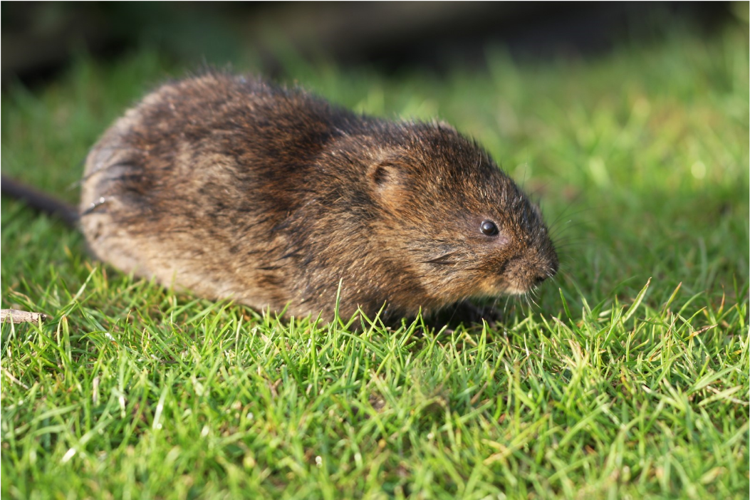Comprehending Vole Backyard Damage and How to Fight It
Comprehending Vole Backyard Damage and How to Fight It
Blog Article
Grasping Vole Bug Control: In-depth Insights on Invasion Avoidance and Therapy Techniques
By identifying the refined indications of vole problem early on, we can take aggressive procedures to avoid widespread damage. In this conversation, we will discover the nuances of vole actions, dig into the identification of problem indicators, and uncover the most effective prevention and treatment techniques.
Understanding Vole Behavior
Examining the foraging patterns of voles supplies valuable insights into their habits and habitat preferences. By observing their foraging behavior, researchers can gain a far better understanding of where voles prefer to develop their environments and the degree of their ecological effect.
Research study indicates that voles display discerning feeding habits, favoring seeds, bulbs, and roots. This nutritional preference affects their foraging patterns, leading them to locations rich in plants and ground cover. Furthermore, voles are understood to develop elaborate passage systems for foraging and nesting objectives, indicating a high degree of flexibility to their surroundings.
Recognizing vole habits is vital for carrying out targeted pest control measures that interrupt their habitat preferences and foraging activities (vole control utah). By examining their actions, experts can create extra efficient avoidance and treatment strategies to manage vole invasions

Identifying Indications of Vole Problem
Vole problems can be detected by recognizing particular signs of their presence in a location. Among one of the most common indicators of a vole infestation is the existence of surface area paths. Voles develop networks of narrow pathways on the ground that are typically around two inches broad. These runways are commonly located in verdant locations or under compost or ground cover where voles can relocate easily and search for food.
An additional crucial indicator of vole problem is the existence of tiny burrow openings in the ground. Voles dig superficial burrow systems with several entryways and departures. These burrows work as sanctuary and nesting sites for the voles. Furthermore, voles are understood to leave behind chewed plant stems, roots, and light bulbs near their burrow openings, showing their feeding task in the area.
Moreover, vole droppings can likewise symbolize their visibility. Vole droppings are little, brown, and round in shape, resembling grains of rice. Discovering these droppings along paths or near burrow openings can verify a vole problem. By being alert for these indications, homeowner can quickly resolve vole invasions and protect against more damages.
Applying Aggressive Avoidance Procedures

In addition, employing natural vole deterrents like castor oil-based repellents or predator pee can function as efficient safety nets. It is also suggested to on a regular basis inspect outside rooms for any type of signs of vole activity, such as paths or tunnel openings, to attend to prospective problems immediately. vole pest control. By adopting these aggressive prevention approaches, residential property owners can significantly reduce the possibility of vole damages and maintain the wellness and aesthetic appeals of their landscapes
Effective Therapy Techniques
Incorporating targeted trapping approaches and utilizing approved rodenticides are vital parts of reliable therapy strategies for handling vole problems. Trapping can be an efficient way to minimize vole populations, especially when put strategically in their energetic paths. Break catches and live catches can both work, with the last permitting the capture and moving of voles. When making use of rodenticides, it is crucial to follow safety and security guidelines to stop harm to non-target pets and animals. Area rodenticides in safe bait stations to minimize dangers to unplanned targets. In addition, environment adjustment, such as reducing ground cover and eliminating resources of food, can help hinder voles from infesting an area. Normal monitoring and maintenance are likewise crucial aspects of successful therapy approaches to ensure that vole populations are maintained under control. By incorporating capturing, rodenticides, habitat modification, and regular tracking, reliable vole pest control can be accomplished.
Monitoring and Upkeep Tips
Routine monitoring allows for the early detection of vole activity, making it possible for timely intervention prior to problems aggravate. To properly keep an eye on vole populaces, purposefully placed catches can be utilized in vole paths or near burrow entryways.
In addition, preserving a clean and neat landscape is important in vole prevention. Clearing up away debris, such as heaps of wood or thick plants, gets rid of prospective vole environments. Consistently mowing lawns and trimming plants helps in reducing vole hiding areas and decreases their access to food sources.
Furthermore, continuous upkeep of physical obstacles, such as fences or wire mesh, is essential to stop vole breach. Checking and fixing any damages to these structures makes sure that vole control stays efficient in securing homes from invasions. By integrating these monitoring and upkeep practices right into a comprehensive vole insect control plan, individuals can vole control effectively take care of vole populations and protect their buildings from damage.
Verdict
To conclude, mastering vole parasite control needs a strong understanding of vole actions, the capacity to identify signs of problem, applying proactive prevention steps, effective therapy methods, and constant surveillance and maintenance. By taking an extensive approach to vole control, people can successfully take care of and stop infestations, eventually protecting their property and surrounding setting from damages triggered by these tiny rats.
In this discussion, we will certainly check out the subtleties of vole actions, dive right into the recognition of problem signs, and reveal the most efficient avoidance and therapy approaches.Incorporating targeted trapping approaches and utilizing approved rodenticides are crucial elements of effective treatment methods for handling vole problems. To successfully keep an eye on vole populaces, tactically positioned catches can be utilized in vole runways or near burrow entrances. Examining and repairing any kind of damages to these structures makes sure that vole control remains reliable in protecting residential or commercial properties from infestations. By integrating these surveillance and maintenance techniques right into an extensive vole pest control plan, people can properly handle vole populations and shield their properties from damages.
Report this page